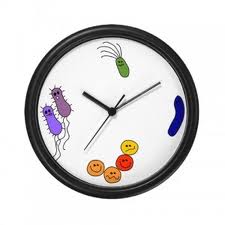Gastroenteritis Viruses
Foodborne Pathogenic Microorganisms and Natural Toxins
Gastroenteritis Viruses
1. Name of the Organism:
Other viruses associated with gastroenteritis
Although the rotavirus and the Norwalk family of viruses are the leading causes of viral gastroenteritis, a number of other viruses have been implicated in outbreaks, including astroviruses, caliciviruses, enteric adenoviruses and parvovirus. Astroviruses, caliciviruses, and the Norwalk family of viruses possess well-defined surface structures and are sometimes identified as "small round structured viruses" or SRSVs. Viruses with smooth edge and no discernible surface structure are designated "featureless viruses" or "small round viruses" (SRVs). These agents resemble enterovirus or parvovirus, and may be related to them.
Astroviruses are unclassified viruses which contain a single positive strand of RNA of about 7.5 kb surrounded by a protein capsid of 28-30 nm diameter. A five or six pointed star shape can be observed on the particles under the electron microscope. Mature virions contain two major coat proteins of about 33 kDa each and have a buoyant density in CsCl of 1.38 - 1.40 g/ml. At least five human serotypes have been identified in England. The Marin County agent found in the U.S. is serologically related to astrovirus type 5.
Caliciviruses are classified in the family Caliciviridae. They contain a single strand of RNA surrounded by a protein capsid of 31-40 nm diameter. Mature virions have cup-shaped indentations which give them a 'Star of David' appearance in the electron microscope. The particle contain a single major coat protein of 60 kDa and have a buoyant density in CsCl of 1.36 - 1.39 g/ml. Four serotypes have been identified in England.
Enteric adenoviruses represent serotypes 40 and 41 of the family Adenoviridae. These viruses contain a double-stranded DNA surrounded by a distinctive protein capsid of about 70 nm diameter. Mature virions have a buoyant density in CsCl of about 1.345 g/ml.
Parvoviruses belong to the family Parvoviridae, the only group of animal viruses to contain linear single-stranded DNA. The DNA genome is surrounded by a protein capsid of about 22 nm diameter. The buoyant density of the particle in CsCl is 1.39-1.42 g/ml. The Ditchling, Wollan, Paramatta, and cockle agents are candidate parvoviruses associated with human gastroenteritis.
2. Nature of Acute Disease:
Common names of the illness caused by these viruses are acute nonbacterial infectious gastroenteritis and viral gastroenteritis.
3. Nature of Disease:
Viral gastroenteritis is usually a mild illness characterized by nausea, vomiting, diarrhea, malaise, abdominal pain, headache, and fever. The infectious dose is not known but is presumed to be low.
4. Diagnosis of Human Illness:
Specific diagnosis of the disease can be made by some laboratories possessing appropriate reagents. Identification of the virus present in early acute stool samples is made by immune electron microscopy and various enzyme immunoassays. Confirmation often requires demonstration of seroconversion to the agent by serological tests on acute and convalescent serum pairs.
5. Associated Foods:
Viral gastroenteritis is transmitted by the fecal-oral route via person-to-person contact or ingestion of contaminated foods and water. Ill food handlers may contaminate foods that are not further cooked before consumption. Enteric adenovirus may also be transmitted by the respiratory route. Shellfish have been implicated in illness caused by a parvo-like virus.
6. Relative Frequency of Disease:
Astroviruses cause sporadic gastroenteritis in children under 4 years of age and account for about 4% of the cases hospitalized for diarrhea. Most American and British children over 10 years of age have antibodies to the virus.
Caliciviruses infect children between 6 and 24 months of age and account for about 3% of hospital admissions for diarrhea. By 6 years of age, more than 90% of all children have developed immunity to the illness.
The enteric adenovirus causes 5-20% of the gastroenteritis in young children, and is the second most common cause of gastroenteritis in this age group. By 4 years of age, 85% of all children have developed immunity to the disease. Parvo-like viruses have been implicated in a number of shellfish-associated outbreaks, but the frequency of disease is unknown.
7. Course of Disease and Complications:
A mild, self limiting illness usually develops 10 to 70 hours after contaminated food or water is consumed and lasts for 2 to 9 days. The clinical features are milder but otherwise indistinguishable from rotavirus gastroenteritis. Co-infections with other enteric agents may result in more severe illness lasting a longer period of time.
8. Target Populations:
The target populations for astro and caliciviruses are young children and the elderly. Only young children seem to develop illness caused by the enteric adenoviruses. Infection with these viruses is widespread and seems to result in development of immunity. Parvoviruses infect all age groups and probably do not ilicit a permanent immunity.
9. Food Analysis:
Only a parvovirus-like agent (cockle) has been isolated from seafood associated with an outbreak. Although foods are not routinely analyzed for these viruses, it may be possible to apply current immunological procedures to detect viruses in clinical specimens. Gene probes and PCR detection methods are currently being developed.



Comments
Post a Comment